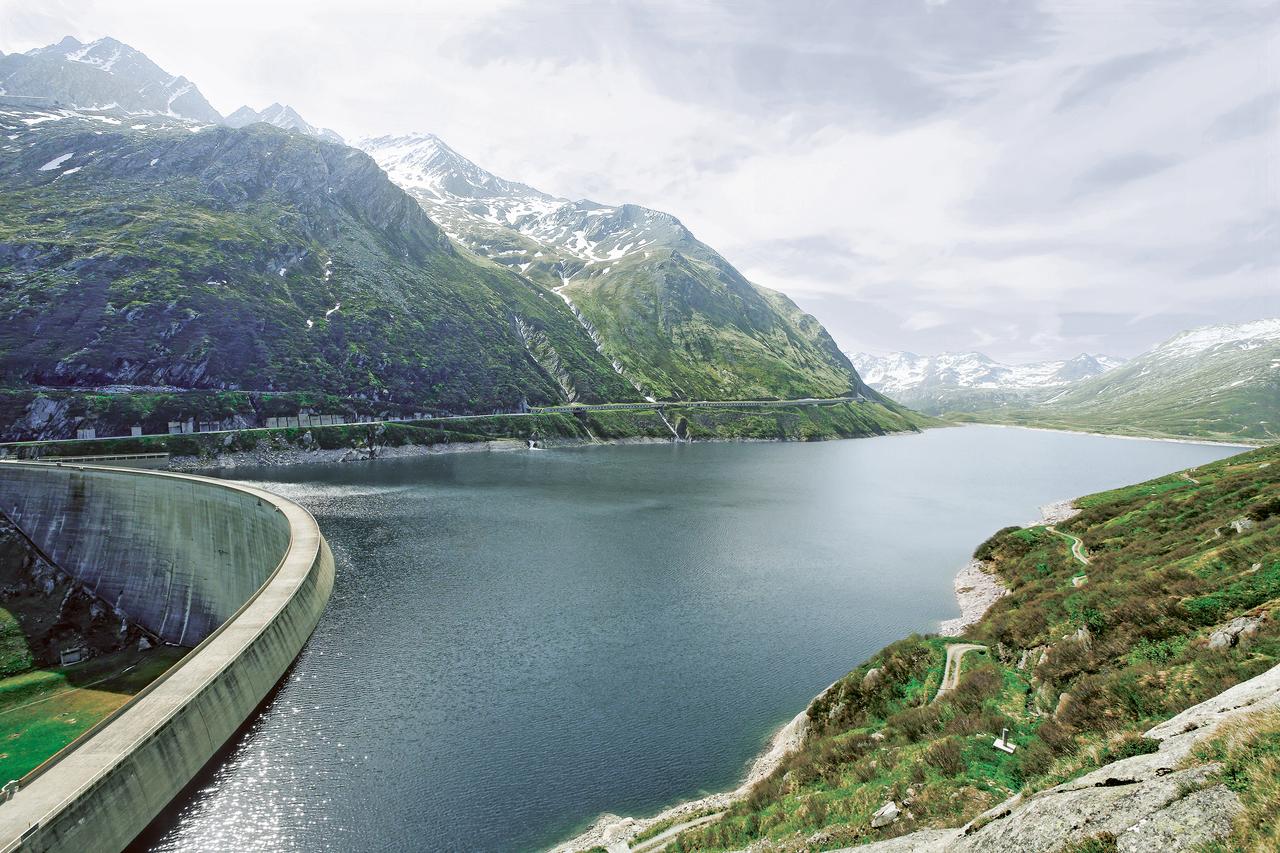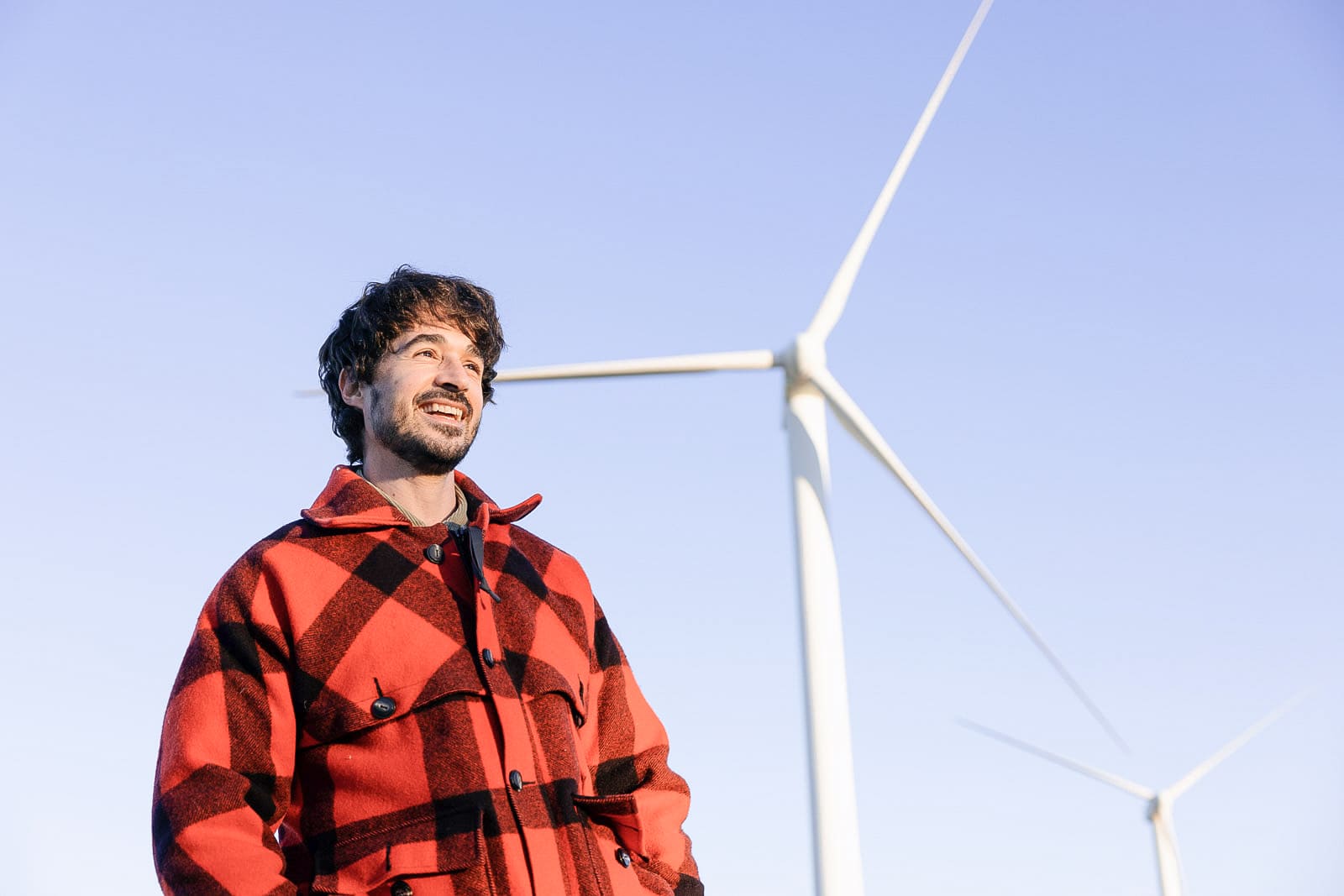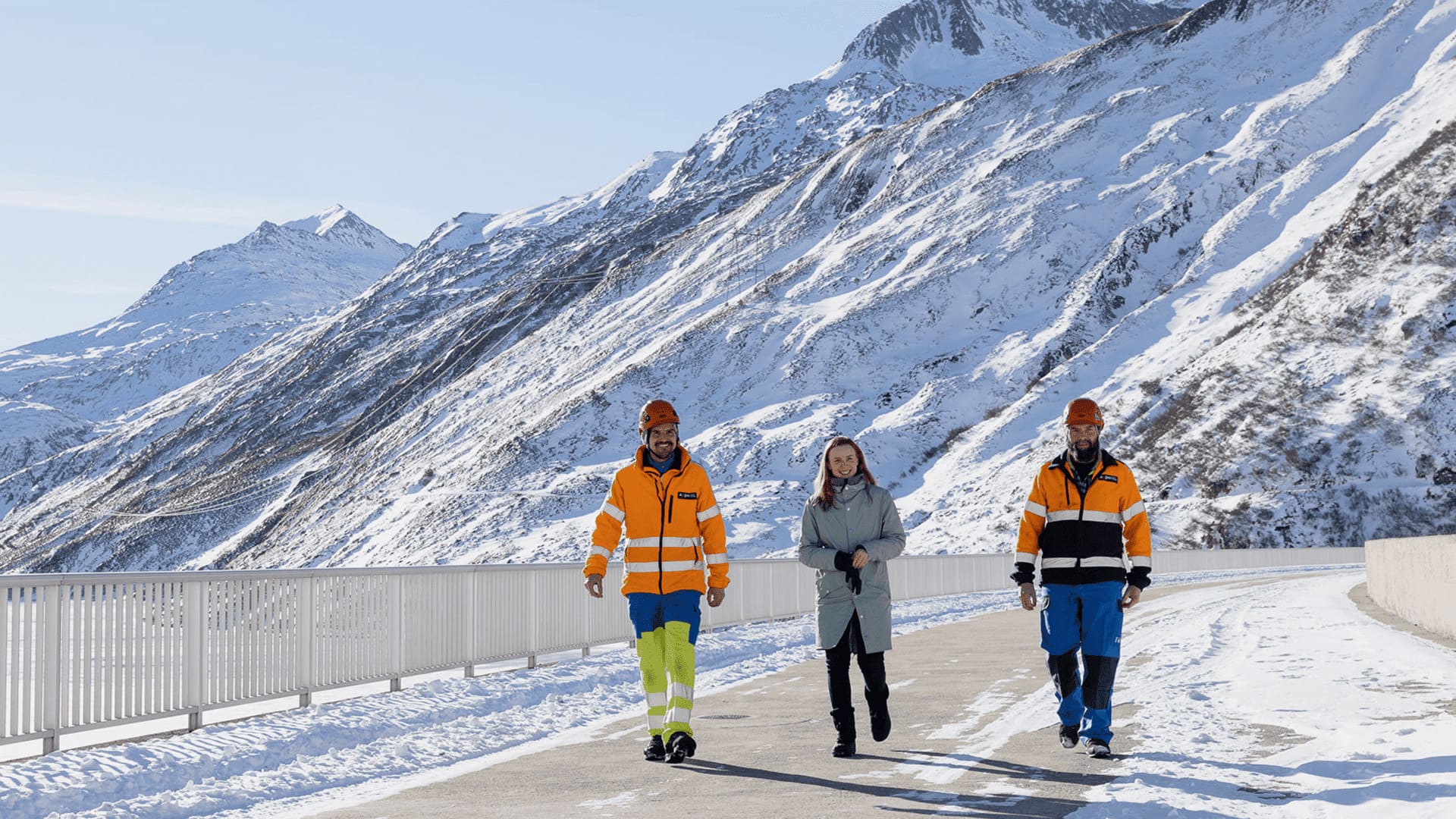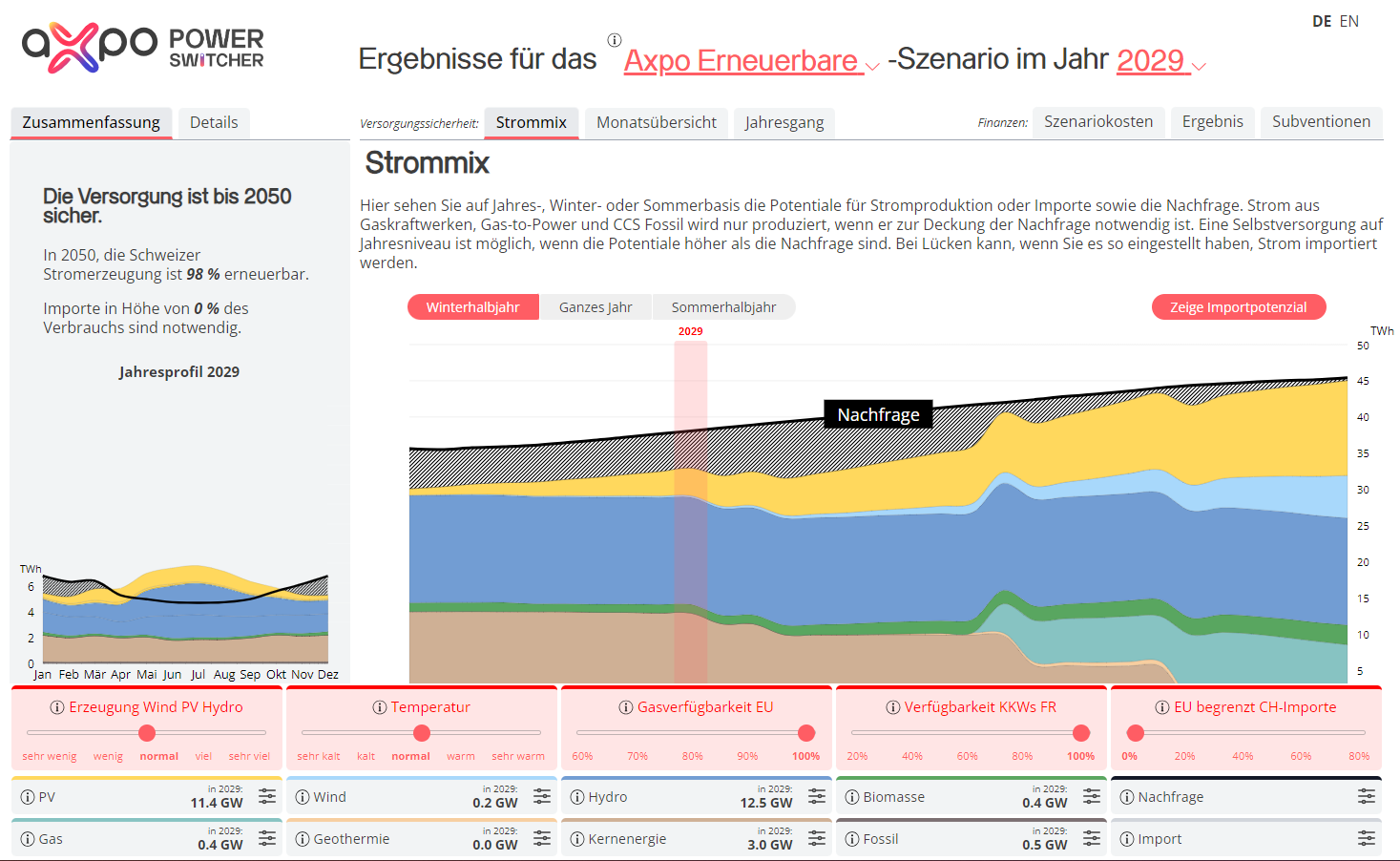16.05.2018 | Hard times for wind power in Switzerland
Blowin' in the Wind
In the next 30 years, Switzerland must increase the proportion of wind energy in the power mix from currently 0.2 to 7 per cent under the Energy Strategy 2050. And: Most Swiss citizens think a windmill is OK in the neighbourhood, as indicated by a survey conducted by Tamedia. But in concrete cases, many projects fail due to local opposition.
The European wind industry is well-developed. According to WindEurope, 10.4 per cent of European power consumption can currently be covered by wind power (status 2016). Of this volume, 1.5 per cent comes from offshore plants. Denmark is the European leader when it comes to electricity from wind power (see graphic). A total of eleven countries currently cover over 10 per cent of their power needs with wind energy.
Switzerland currently has 37 wind power plants. The largest wind farm with 16 wind turbines (total capacity 37.2 MW) is located in the Bernese Jura on the Mont Croisin. See where the other plants are located here. They produce an average of about 140 GWh of electricity, which is about 0.2 per cent of the power consumption in Switzerland (status 2016) or the demand of some 30,000 households. As a comparison: According to Suisse Eole, the following number of wind energy plants were in operation in bordering German states at the end of 2016:
- Baden-Württemberg: 563 wind energy plants (surface 15 % smaller than Switzerland)
- Bavaria: 1061 wind energy plants (surface 70 % larger than Switzerland)
- Rhineland-Palatinate: 1612 wind energy plants (surface 50 % smaller than Switzerland)
Expansion strategy
Accordingly the "Luzerner Zeitung" calls Switzerland a "developing country" when it comes to wind energy. The Federal Council has plans to change this. The Energy Strategy 2050 that was approved by 58 per cent of Swiss voters in May 2017 foresees strong growth in the area of wind energy in Switzerland. By the year 2020, wind energy plants will produce about 600 GWh of electricity per year. By 2050, this volume must reach about 4,000 GWh according to calculations by the Swiss Federal Office of Energy (SFOE). This would correspond to about 7 per cent of current electricity consumption at 58,000 GWh (status 2016).
In concrete terms: The Swiss will have to get used to the sight of wind turbines. To generate this capacity, 800 to 900 wind power plants must be built by 2050, corresponding to some 120 wind farms with 5 to 10 plants. According to the SFOE, suitable sites for the use of wind are located in the Jura Mountains, as well as the Alps and Prealps in the western Midlands of Switzerland. According to Suisse Eole, there are currently 69 projects with a total of 390 turbines and a nominal capacity of 1099 MW in planning.
See how strong the wind blows in Switzerland here. You will find more information here
In general, yes...
The referendum on the Energy Strategy 2050 and a representative follow-up survey by Tamedia indicate that the Swiss generally have a positive attitude toward wind energy. In fact, 64 per cent of those surveyed answered yes to the question "Would you accept the sight of a wind turbine where you live". For those who voted yes to the ES 2050, the approval rate is 87 per cent.
That said the construction of new wind turbines in Switzerland ought to be booming. However, that is not the case although the cantons have made a great deal of planning progress, which would make the construction of wind turbines at certain locations possible. Only three new wind power plants went on grid last year on the Gries Pass, and on the Gotthard Pass the construction of five wind turbines is scheduled to begin in 2018. Aside from these, most projects are pending, if they have not already been abandoned.
...but not in my backyard
Despite the broad acceptance of wind energy – when it comes to concrete projects, local opposition often arises. Owing to opposition from the local population, CKW had to modify its project for a wind farm in Kulmerau-Kirchlerau to such an extent that ultimately it was no longer feasible and the wind farm was not built.
Often, just one appeal is enough to prevent a project, summarises Raimund Rodewald from the Swiss Foundation for Landscape Conservation. The Foundation is not per se against wind power, but rejects the construction of wind farms in untouched landscapes and sees the expansion scenarios of the government as unrealistic. "Switzerland is not a wind energy country," Rodewald points out.
Wind power in Switzerland will never achieve the level of importance it has in Denmark or Germany, says Suisse Eole. Nevertheless, the Association for the Promotion of Wind Energy believes that wind power does have a chance in Switzerland, particularly during the winter months when winds are strong here and wind power becomes an important, indispensable supplement to hydropower. Reto Rigassi, Director of Suisse Eole: "Expansion is a question of will."
The nimby effect
But the Swiss struggle with the question of will. The Lindenberg wind farm project by CKW, AEW and SIG has broadly involved the local population. However, firm opposition from the Pro Lindenberg Association already exists according to the "Luzerner Zeitung": "We do not want to fight wind energy, but we want to protect the Lindenberg", argues the association and has already threatened to use all the available legal means to prevent such a project.
Opposition against infrastructure projects – not only in the energy area – are the order of the day. "Wealthy Switzerland is a stronghold of local opposition that is often explained as a federalist tradition", writes the "Neue Zürcher Zeitung". Small, well-organised groups or environmental organisations oppose initiatives with the "not in my backyard" (nimby) argument, which is supported by majorities.
So it remains uncertain whether wind power in Switzerland can make a significant contribution to reliable security of supply as foreseen by the government once the Swiss nuclear power plants have been shut down. Or, as Bob Dylan says: The answer is blowin‘ in the wind!
Wind power performance
Typical Swiss wind power plants have a nominal capacity of 3 MW. A plant at a location with average wind conditions can produce nearly 6 GWh of electricity. This corresponds to the consumption of some 1,700 households (with an average consumption of 3500 kWh). A wind energy plant can generate electricity during 60 to 75 percent of the time. There are three wind speeds:
- Switch on speed: 2 to 4 metres/per second (m/s), no power generation
- Nominal speed: Approx. 12 m/s, then the wind power plants reaches its maximum capacity
- Shut down speed: To prevent damage during strong winds, the plant is shut down during high winds. Depending on the plant, this happens when wind speeds are between 28 m/s and 35 m/s (90 km/h).




.jpg)





